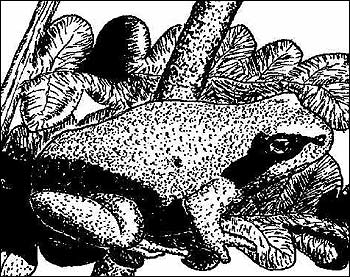
By David Wagner
 |
| Pacific Tree Frog Pseudacris regilla |
Stepping outside around midnight this time of year, I notice that the big dipper (Ursa Major) is to the right and the big W (Cassiopeia) is to the left of the North Star. By mid-summer they will rotate around into reverse positions. Whatever their orientation, finding them means finding the North Star. Finding the North Star means I can figure out which way I am going without needing technology or instruments.
February marks the quickening of spring blooms in the Willamette Valley. The rainy season will continue for several months yet. Gradually increasing warmth that comes with the gradually increasing day length brings most of the native plants to flower. The rate reaches a frenzy around the equinox, March 20 this year, when the change in day length reaches its most dramatic.
This being an el Niño year, it is a good gamble to start planting those early leafy crops. My first planting of arugula has already sprouted; I’m thinking about an early planting of sugar snap peas. The warmth that comes with el Niño also means the probability of less rainfall, so getting things in early takes advantage of the tail end of the rainy season.
The ponds are full, which brings in a wonderful array of water birds. Cormorants are making a good show, the Canada geese are starting to display their love dances. Tree frogs are singing. For others, love may not be in the air but birthing is happening in winter dens.
David Wagner is a botanist who has lived in Eugene for more than 30 years. He teaches mosses and leads plant walks. He may be reached at fernzenmosses at me.com